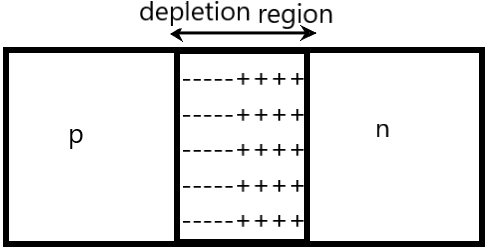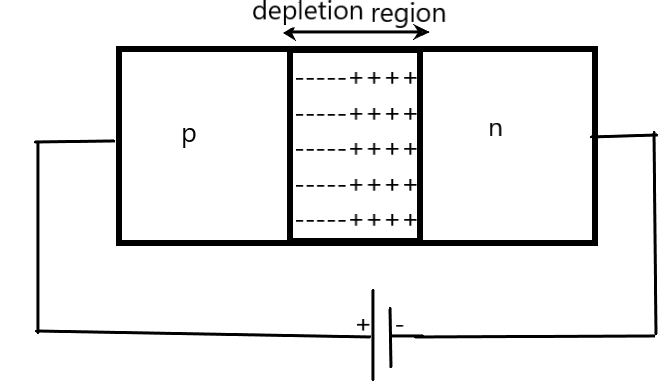
A p-n junction is said to be in forward bias, if –
A) the n-side is connected to the -ve side and the p-side to the +ve terminal of an external battery.
B) the n-side is connected to the +ve side and p-side to the -ve side of an external battery.
C) n-side is connected to +ve side and the p is neutral.
D) None of these.
Answer
524.7k+ views
Hint: We need to find the characteristic of the p-n junction diode to understand the forward bias and the reverse bias involved in the diode. The idea that forward bias allows current to flow is to be remembered to get the solution to this problem.
Complete answer:
The p-n junction diode is a basic device which works on the semiconductors.
It consists of a p-type and n-type semiconductor with a depletion region between them. We know that there are excess positive charge carriers in the p-side and excess of electrons in the n-side. Once they are joined, a region is developed between them which acts as a barrier for the flow of positive charges from p-side to the n-side and electrons from n-side to p-side.

We apply a voltage across this region such as the voltage subtracts the barrier across the region. For that the p-side should be connected to the positive terminal of the external source and n-side should be connected to the negative terminal of the source.
We can see from the figure that the potential across the depletion region decreases as the external source is applied in such a way that p-side is connected to positive terminal and n-side to the negative terminal.

This is the condition of forward bias for the p-n junction.
The correct answer is option A.
Note:
The forward bias is the type of bias in which the p-n junction conducts normally. But, in the reverse bias condition also the p-n junction can conduct after a breakdown voltage with a large amount of current known as reverse saturation current.
Complete answer:
The p-n junction diode is a basic device which works on the semiconductors.
It consists of a p-type and n-type semiconductor with a depletion region between them. We know that there are excess positive charge carriers in the p-side and excess of electrons in the n-side. Once they are joined, a region is developed between them which acts as a barrier for the flow of positive charges from p-side to the n-side and electrons from n-side to p-side.

We apply a voltage across this region such as the voltage subtracts the barrier across the region. For that the p-side should be connected to the positive terminal of the external source and n-side should be connected to the negative terminal of the source.
We can see from the figure that the potential across the depletion region decreases as the external source is applied in such a way that p-side is connected to positive terminal and n-side to the negative terminal.

This is the condition of forward bias for the p-n junction.
The correct answer is option A.
Note:
The forward bias is the type of bias in which the p-n junction conducts normally. But, in the reverse bias condition also the p-n junction can conduct after a breakdown voltage with a large amount of current known as reverse saturation current.
Recently Updated Pages
Master Class 12 Business Studies: Engaging Questions & Answers for Success

Master Class 12 Biology: Engaging Questions & Answers for Success

Master Class 12 Physics: Engaging Questions & Answers for Success

Class 12 Question and Answer - Your Ultimate Solutions Guide

Master Class 12 English: Engaging Questions & Answers for Success

Master Class 12 Economics: Engaging Questions & Answers for Success

Trending doubts
Which are the Top 10 Largest Countries of the World?

What is transplantation in agriculture class 12 biology CBSE

Differentiate between homogeneous and heterogeneous class 12 chemistry CBSE

Why is the cell called the structural and functional class 12 biology CBSE

Who discovered the cell and how class 12 biology CBSE

What is the Full Form of PVC, PET, HDPE, LDPE, PP and PS ?




